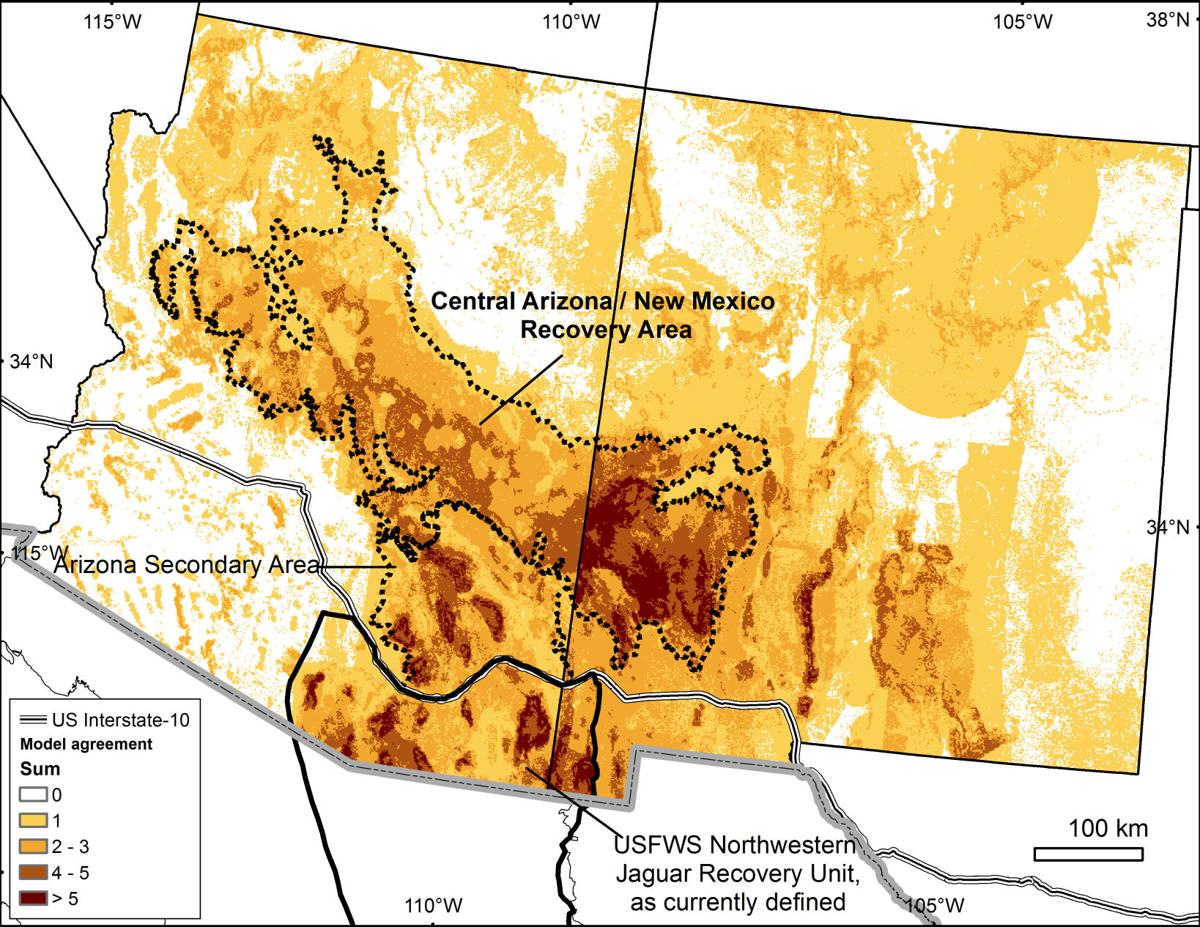 |
| A young male jaguar captured on camera trap earlier this year in northern Sonora. |
 |
| Map of the proposed jaguar reintroduction site |
I really think this recent study of reintroducing the jaguar in the American Southwest should be seriously considered. This big cat historically played a crucial role in the ecological balance of the Southwest. It demonstrated that by keeping the deer and peccary populations in check. When the jaguar disappeared, the numbers of deer and peccaries were left to be in control by its smaller and lighter cousin, the puma. The puma alone is not able to control the peccary population because the latter is known to defend itself when in a group. Also, the peccary's neck is protected by a thick layer of bristles which makes it difficult for the puma to bite into and kill it. The jaguar, on the other hand, is the only big cat that kills with a bite to the skull. This makes it a highly efficient predator of the peccary, whose only vulnerable spot is its head. Therefore, the reintroduction of the jaguar in Arizona and New Mexico is essential for controlling the peccary population and other prey species.
 |
| The collared peccary is one of many animals that forms the jaguar's prey base. |
I also agree that this reintroduction project should include involvement of stakeholders like state, federal, and tribal officials, and the public - especially those living in the vicinity of the proposed release site. I believe it is crucial to conduct awareness programs to educate the public about the benefits the jaguar has on the ecology of southwestern U.S and provide guidance on what they can do to minimize human-jaguar conflicts. This includes improvising security to protect the livestock from jaguars and implementing steps to prevent jaguars from attacking people. In the U.S, over the past few years, jaguars have only been spotted in certain areas along the U.S-Mexico border via camera traps. But these individuals were never sighted deeper into Arizona or New Mexico; they most likely returned back into Mexico. This is why it is essential to reintroduce the jaguar in these two states, in order to reestablish the original ecological balance of the American Southwest.
View article and video here
View article and video here